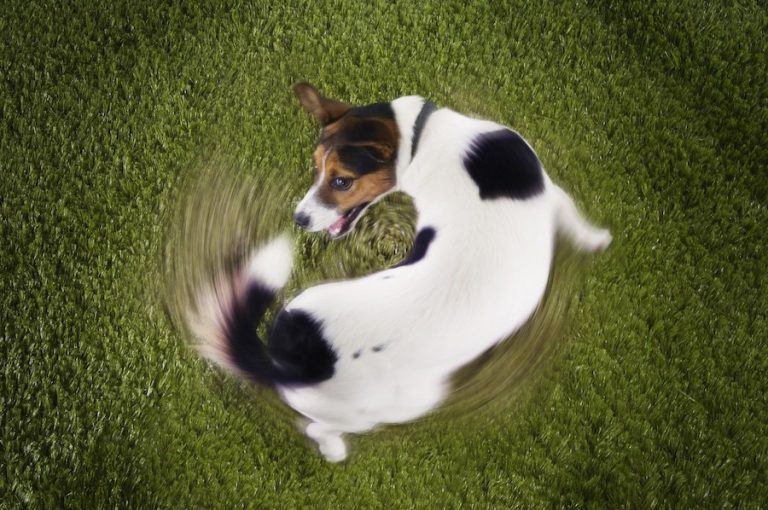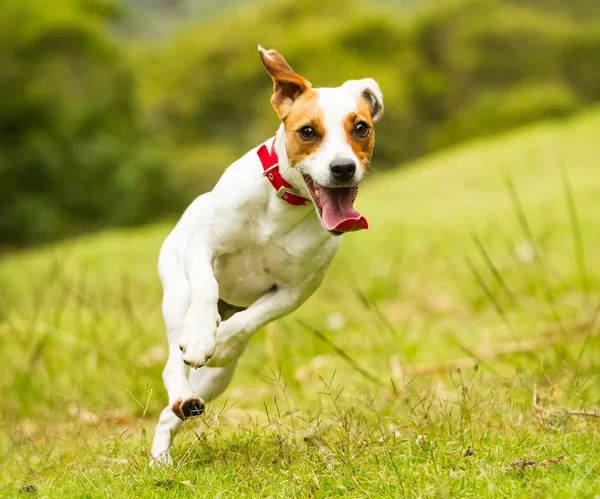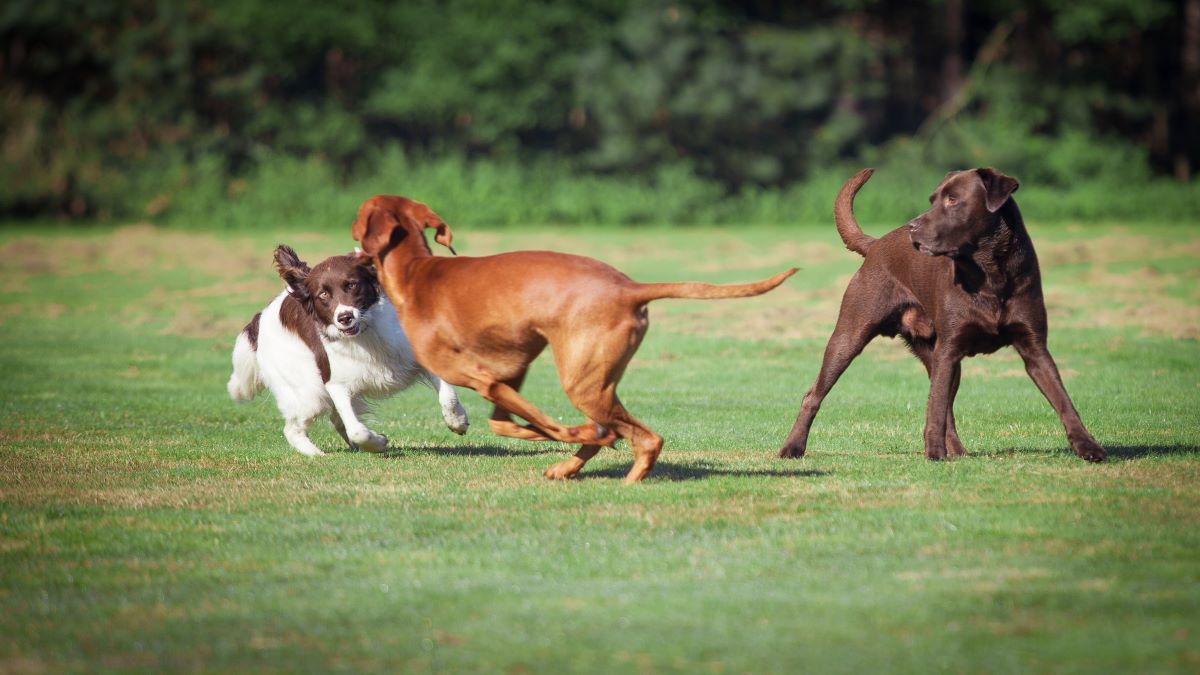Almost any dog owner has heard the term zoomies. But what does that exactly mean? Why do dogs get them? Can you prevent dog zoomies? What you should do? How to react? Why do dogs run in circles? These are all questions that might appear in the head of a pet owner.
Today, however, we will try to explain this natural instinct. It is something that they have inherited from their wild ancestors. In the wild, dogs run in circles to create a comfortable spot to rest, and do this by flattening the grass or underbrush. The result is a small nest-like area.
Yet, today, we will talk about domesticated dogs, and what is the cause of their circling behavior.
What Are Dog Zoomies?
If you have to ask what zoomies are, your dog probably doesn’t get them. Every dog owner has faced them at least once.
Zoomies, also known by their descriptive name, Frenetic Random Activity Period or FRAP, appear as your dog suddenly goes warp speed and runs around like crazy. These sudden bursts of energy may have your dog running in circles with the butt tucked in, charging at full throttle around the garden, through the house, or spinning in tight circles.
And here is a fun fact: they can happen even after a long walk. For example, Milo usually had them in the evening, after we would come back from a walk/exercise/training session. He would still need to burst for 10 to 15 seconds at home.
Why Do Dogs Get Zoomies?
Often, when we talk about why dogs run in circles, we say it is because they have extra energy. We say it is a result of a buildup of excess energy. But it is not always the case.
Frenetic Random Activity Period is normal for dogs, and you should not get concerned about it. They happen more in younger dogs since they are more hyperactive, and gradually decrease as your dog ages.
Milo still gets them, he is 6 years old, but not to the same frequency he did when he was young. Nowadays, he gets the zoomies after we go for a car ride and he gets out of the car, ready to go hiking, but has to do his zoomies first.
No veterinarian can tell you the clear reason for dog zoomies. There are, however, a couple of explanations that can apply:
- Dogs do it to release tension, after a stressful time. For example, coming home from a vet visit, after a visit to the groomer, or in my case, after a car ride (despite enjoying it)
- Getting warmed up, usually, happens in colder temperatures, when the dog runs around the house to warm up after being outdoor
- Celebration, sometimes, feeling good is a reason enough to get zoomies. In most cases, it happens after a poop, and some people call it poophoria, like euphoria following a poop
- An emotional response in healthy dogs, after seeing you coming home or before an upcoming activity they find exciting. This is why you see videos of dogs getting zoomies after their owner grabs a toy or the leash for a walk
- Often happen after a bath, another stressful experience for dogs
- Because of lack of exercise, physical inactivity makes dogs restless. Dogs that have remained sedentary for a long period have to release that excess energy at some point
- Changes in diet, usually, if you try a new food that is higher in sugar. Same as with toddlers that become hyperactive after sugary treats
- Craving for attention. Dogs respond to any kind of attention, be it positive or negative. And sometimes, they will exhibit circling behavior just to get your attention
When Do They Happen?
So, we now know that zoomies are normal behavior. But when do they occur? Does it make a difference? Some dogs get zoomies at certain times. After all, you have to remember, dogs thrive on routine. And when they know something is coming, they get too excited.
For example, Milo also gets excited when my mother gets dressed since he knows she always takes him with her. When I leave him at her house, he chills, and the moment she begins to get dressed, Milo goes crazy. With that in mind, here are some common time periods when dogs get the zoomies.
- After eating, puppies celebrate their meals with an episode of what we call normal dog behavior
- Before going to bed, preparing for a long period of rest and being still, blasting their remaining energy
- After bath time, every dog owner has experienced this with puppies
Are Zoomies Dangerous?
As we said before, running in circles is a normal dog behavior. Generally speaking, they are not dangerous whatsoever. Yes, there is always the risk of your dog running too quickly and twisting something. This is more true with an older dog or some breeds with back problems, like Dachshunds for example.
But in most cases, there is no specific risk involved with zoomies. They are a normal part of your dog’s life. If your dog gets the zoomies frequently, you only might need to reconsider your walks. Do you provide enough physical activity and mental stimulation throughout the day?
Can You Stop Your Dog From Getting Zoomies?
Generally speaking, you should not be worried if your furry friend has occasional zoomies. It is normal behavior. But if you suspect your dog has high levels of anxiety, we suggest some calming treats and mechanisms.
That being said, here are some ways you can reduce the frequency of zoomies:
- Take your dog out for several walks throughout the day
- Go jogging or hiking with your puppy
- Play with your furry friend in the yard
- Provide mental stimulation with toys
- Try some dog agility training
- Do some basic obedience training
- Let your dog play and interact with other dogs
Are Some Breeds More Prone To Zoomies?
Yes, some breeds get the zoomies more than others. For example, breeds like Bullies and Pitbulls are famous for their zoomies. And then, you have to consider herding breeds like Border Collie and Australian Shepherd.
These dogs have a natural instinct to run in circles, so when they do not get enough physical exercise and mental stimulation, they succumb to their instinct. Herding dogs will run in circles around anything in the home.
Do Zoomies Stop At A Certain Age?
We cannot tell for sure. Nobody can guarantee that a dog will stop getting zoomies at a certain age. Yes, dogs calm down as they grow. And usually, at the age of 6 or 7, you might notice a decline. Yet, some dogs get them at the age of 10 or more. It is just that the frequency declines.








